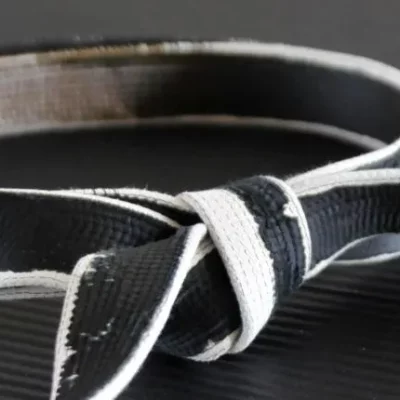There are considered 3 phases of learning in Japanese Martial Arts. This elegantly describes the processing of learning just about anything, and how a student should approach a discipline.
Shu (守) – “Preserve/Obey”
The concept of “Preserve/Obey” is that you learn the technique/form as it is. There are no variations or departure from the technique. This ensures the full concept of the techniques are absorbed and internalized.
There is temptation to experiment with techniques while they are first being learned. Martial arts were borne out of combat. This means that ineffective techniques literally died on the battlefield. This concept is somewhat foreign to studying martial arts in modern times since most practitioners aren’t constantly involved in combat. But many of the martial arts that survived to today were bred and evolved from natural selection; if a soldier died in battle, the technique also died with them. This was the importance of sticking to the technique as it was being learned – to fully understand it’s implications. To prematurely leave a technique – or to make variations without understanding the point of a drill – could result in death.
Ha (破) – “Detach”
The second phase, the “Detach”, is achieved after techniques are learned and internalized. The drilling of forms and techniques have ingrained the principles for which they were created. A student can begin to explore henka (変化) or “variations” of the technique to learn it’s flexibility and limitation. This variation allows the student to “detach” from the orthodox form of the technique.
Instead, they discover deeper underlying principles that connect across different arts, and discover new applications for technique beyond the orthodox form. Movements between technique can begin to blend as the student finds new innovative ways to apply the principles they learned.
Ri (離) – “Transcend”
The last phase is “transcend”, which is the most advanced phase. This means a practitioner transcends and leaves the forms completely. This is closely tied to the concept of Ku (空) or “Void” – as in to move without thought as the practitioner transcend the art itself. Specific technique(s) and their variations are gone as only the practitioner’s movement is left.
Shuhari as a Blueprint
“Preserve” the technique until you’re ready to “Detach” from the technique before finally ready to “Transcend” the technique all together. If you get stuck only preserving technique, you will stunt your growth as you won’t be able to see beyond just orthodox form. However, if you believe you can detach before ingraining the principles, you’ll come to erroneous movement that on a battlefield could have gotten you killed.
The secret is to find the right balance, as well as acknowledge the journey through these phases in a discipline typically takes a life-time.
Get new content straight to your inbox, gain deeper insights into Japanese Martial Arts, and get exclusive offers by joining the Todai Clan!





